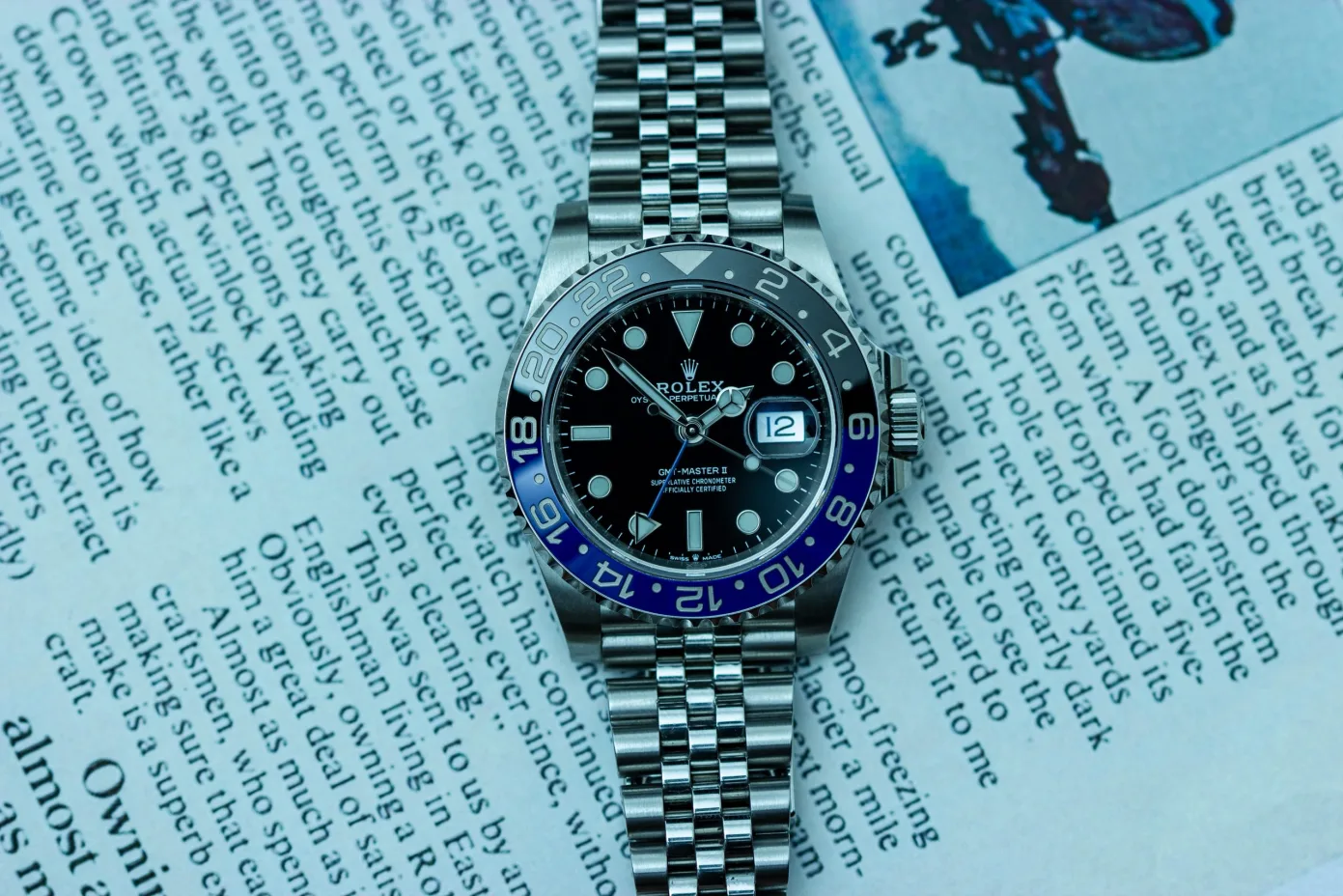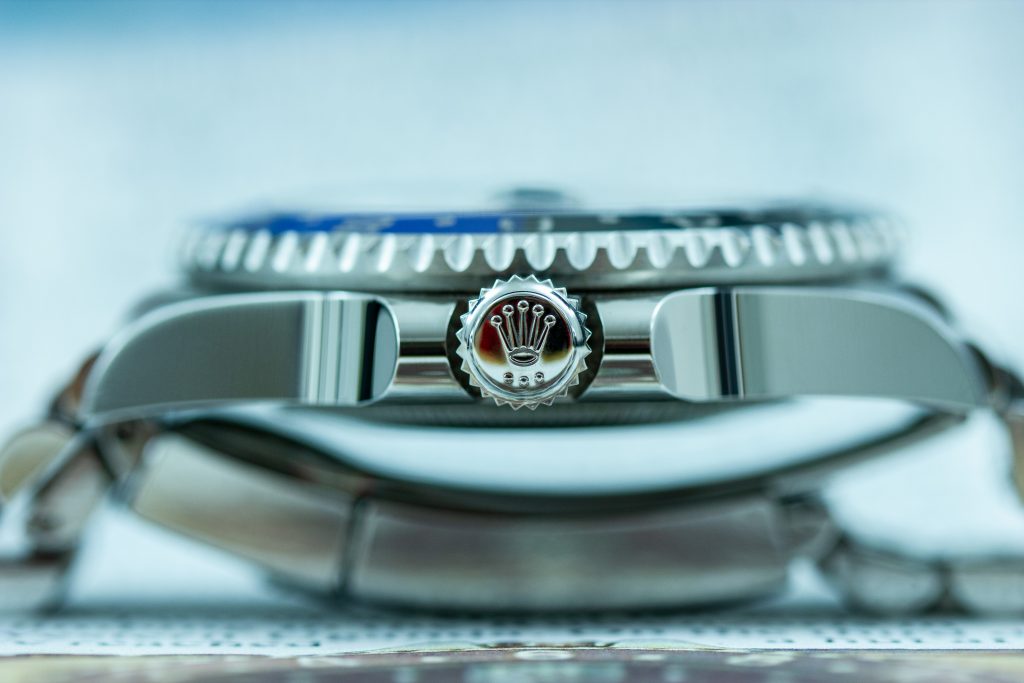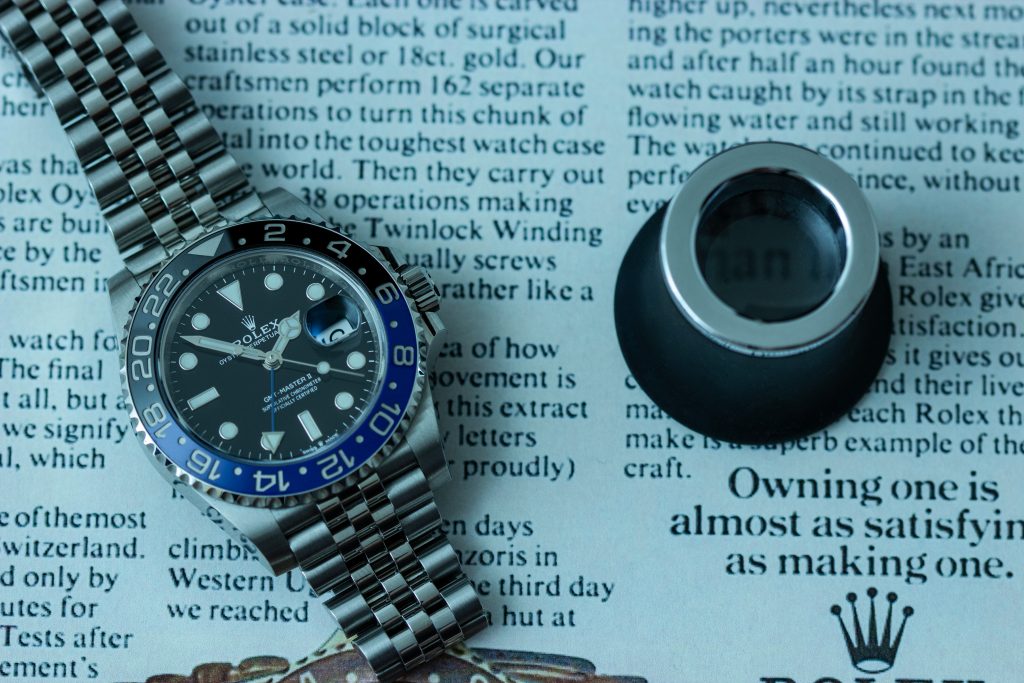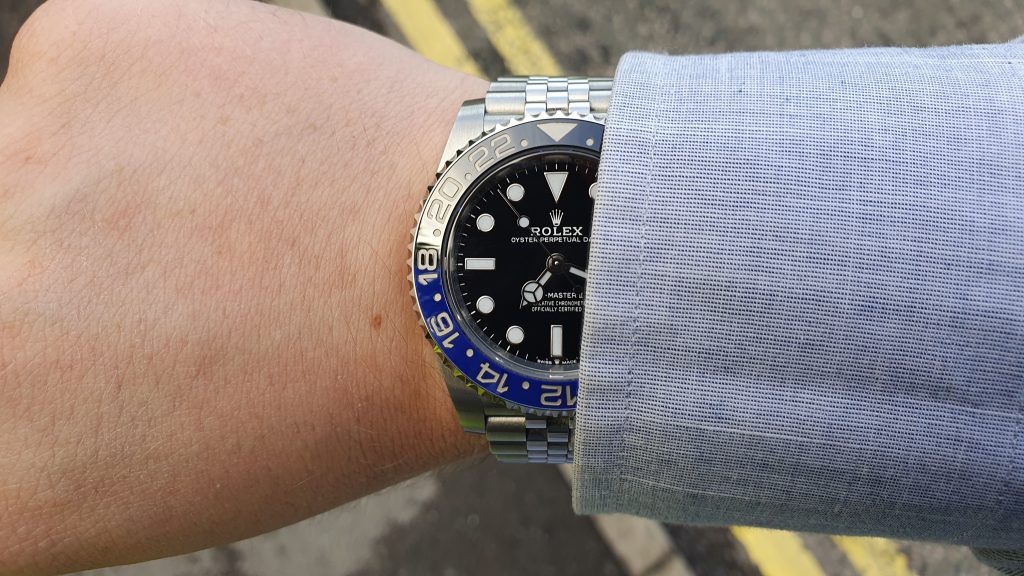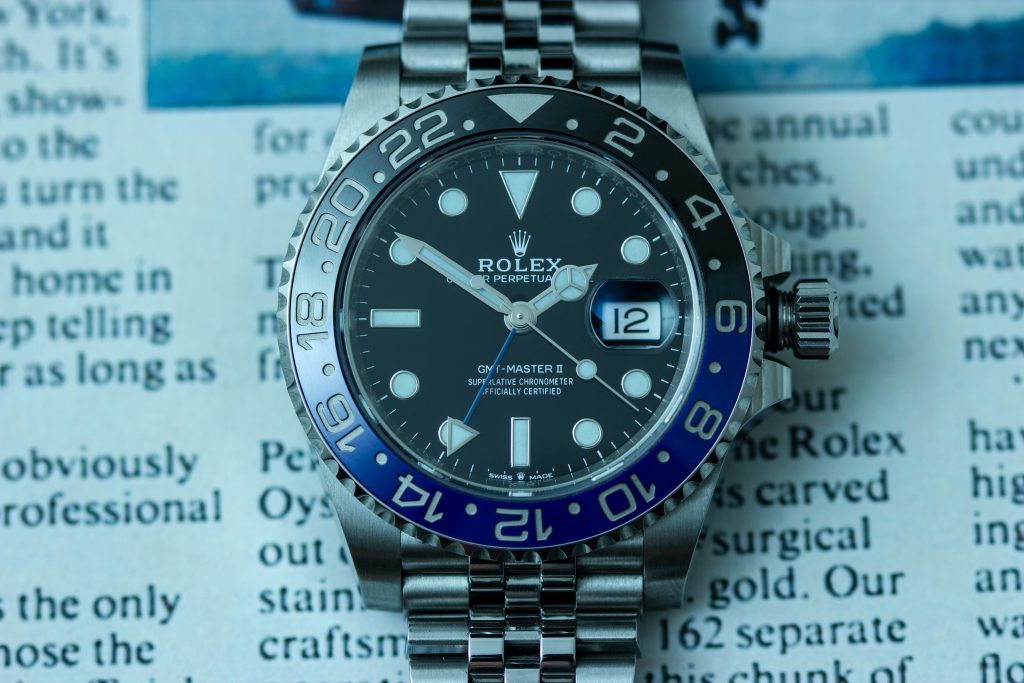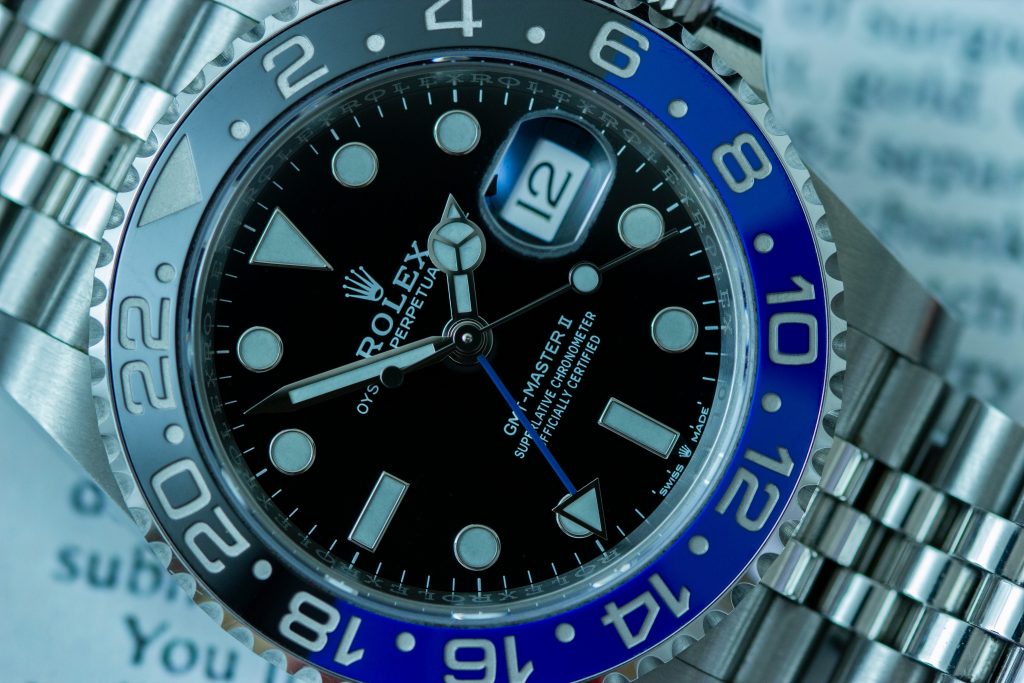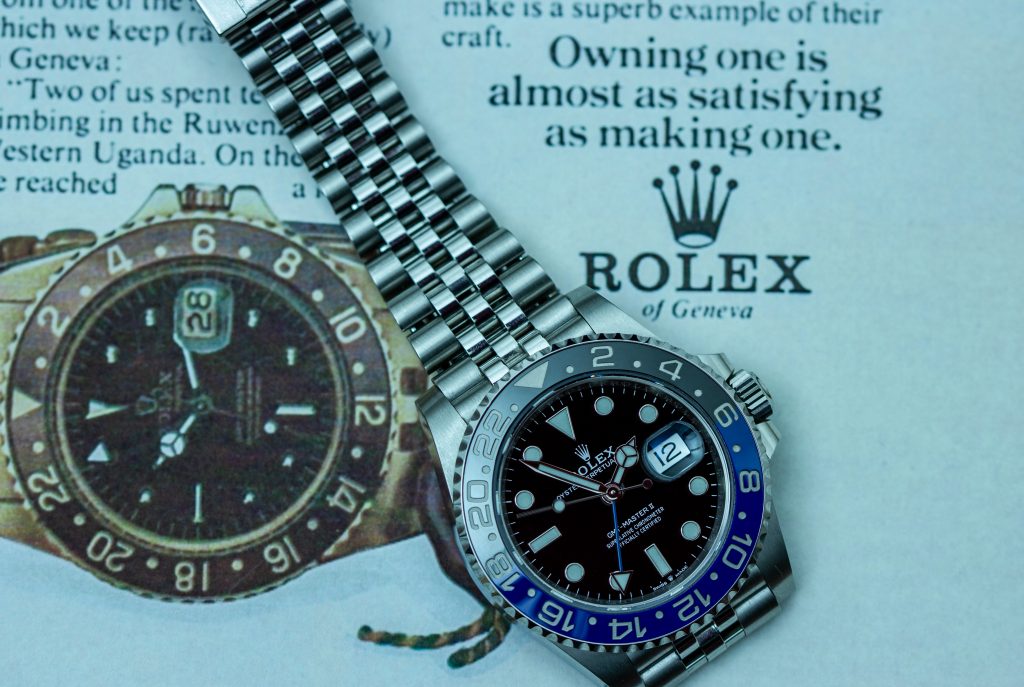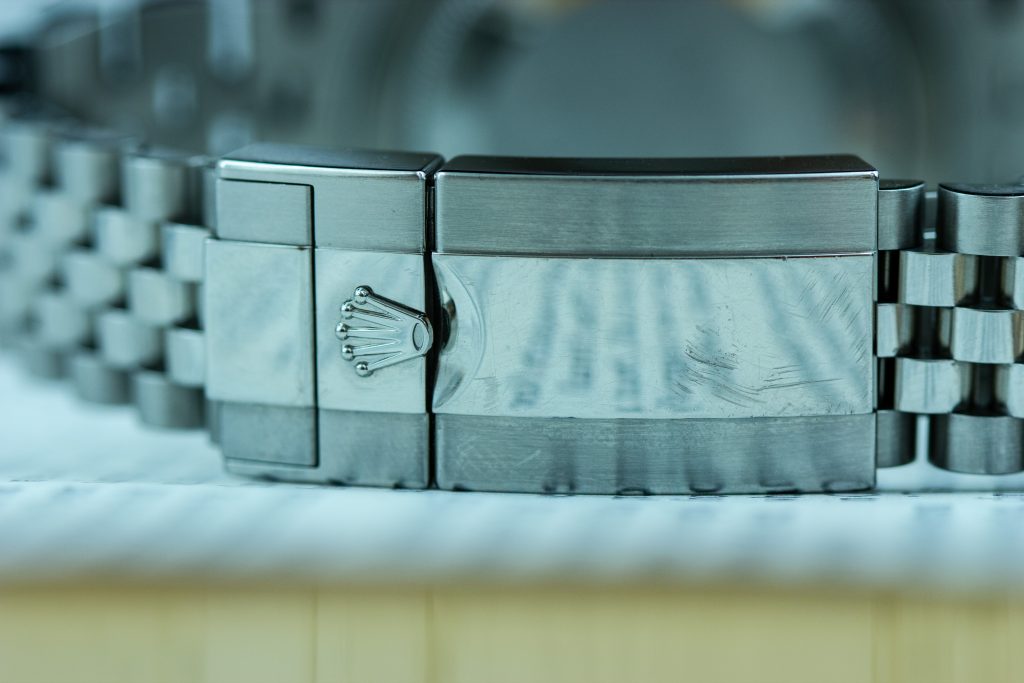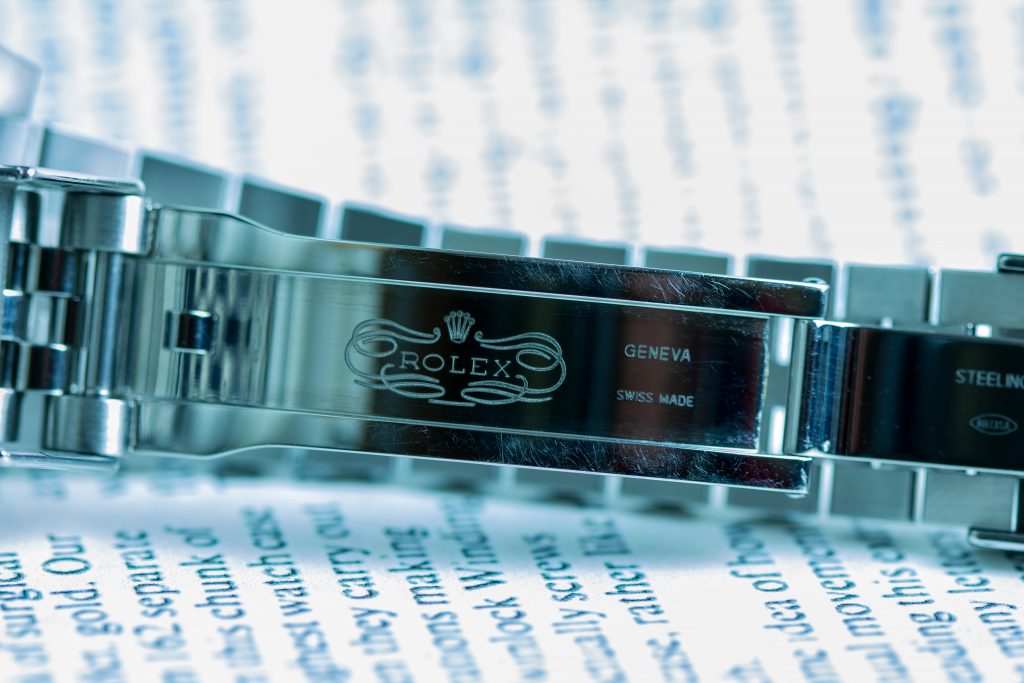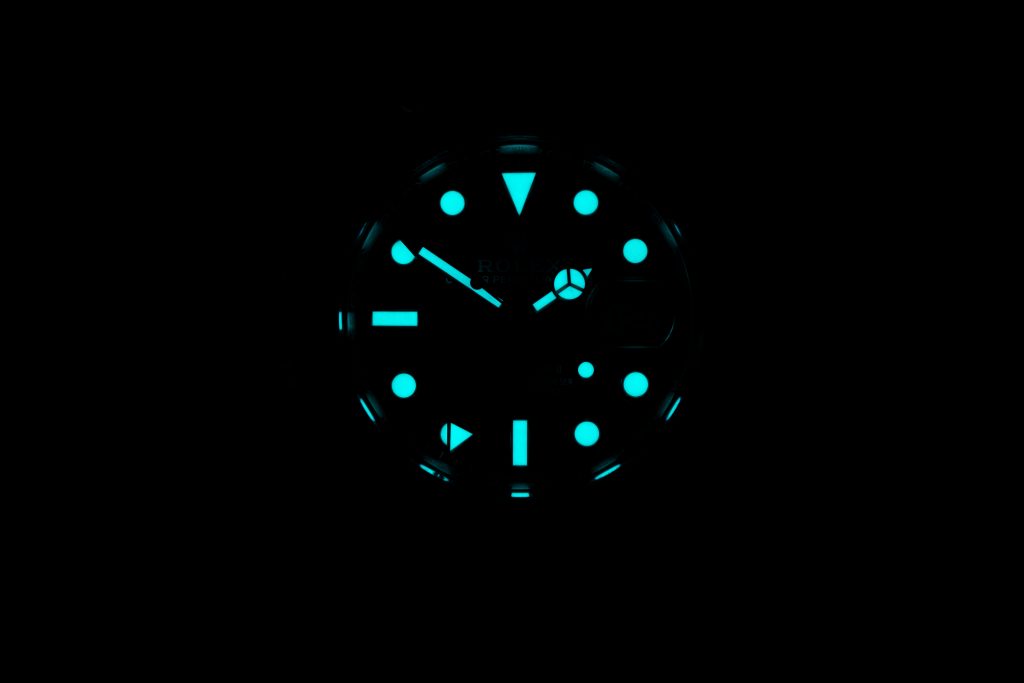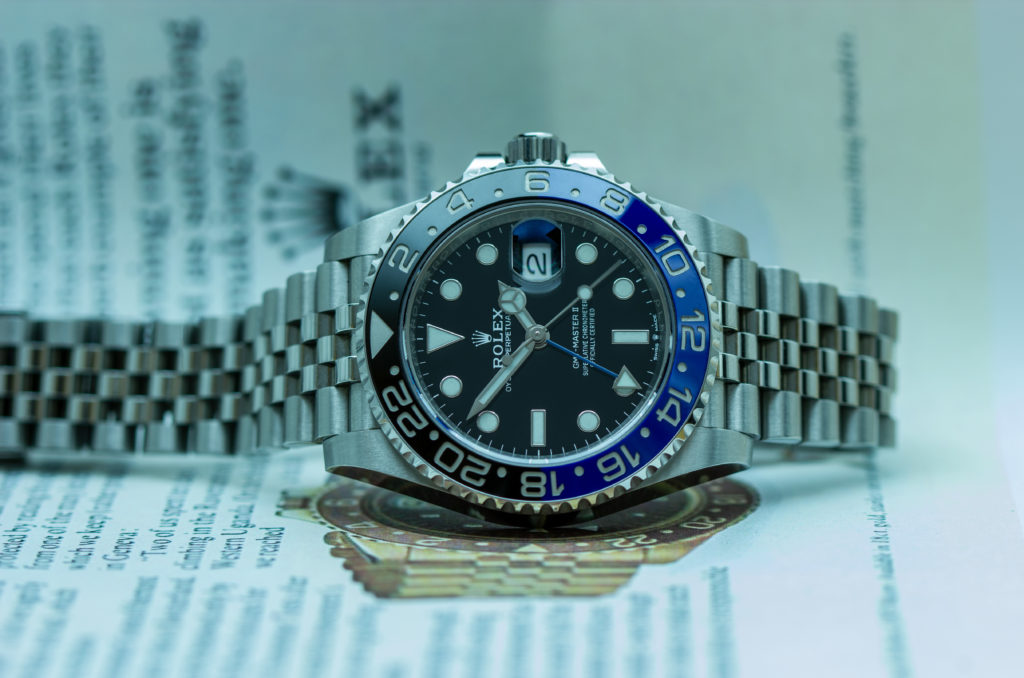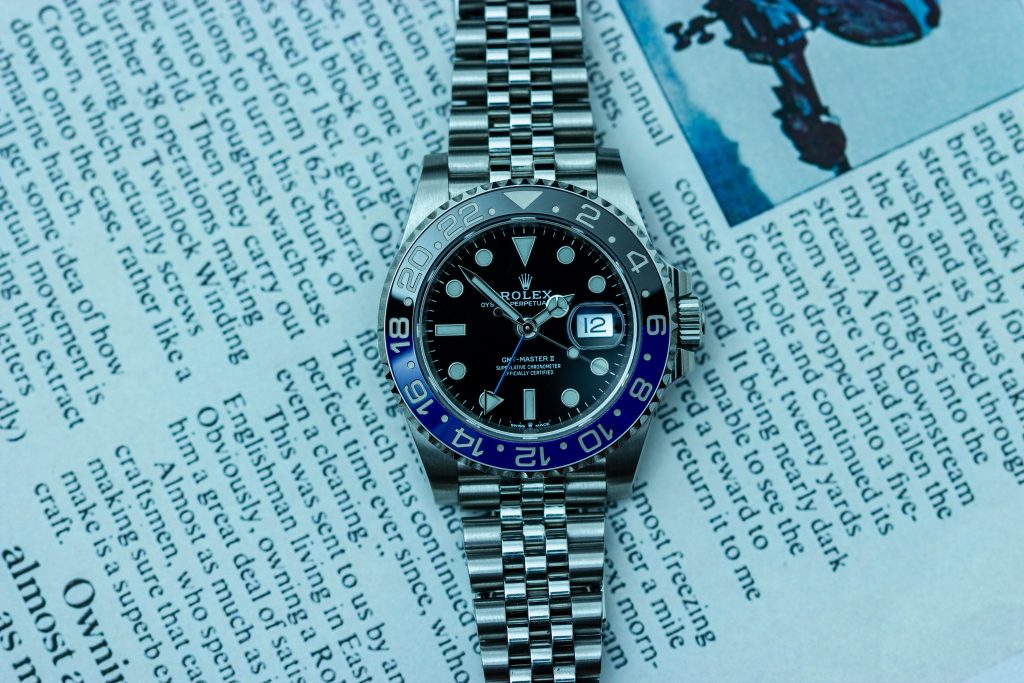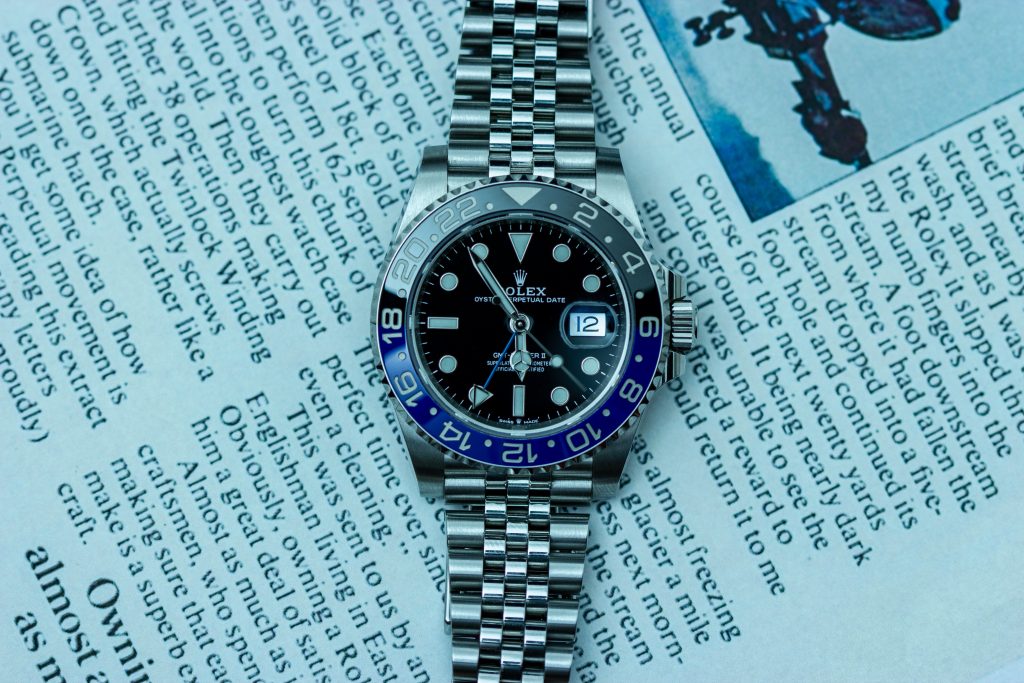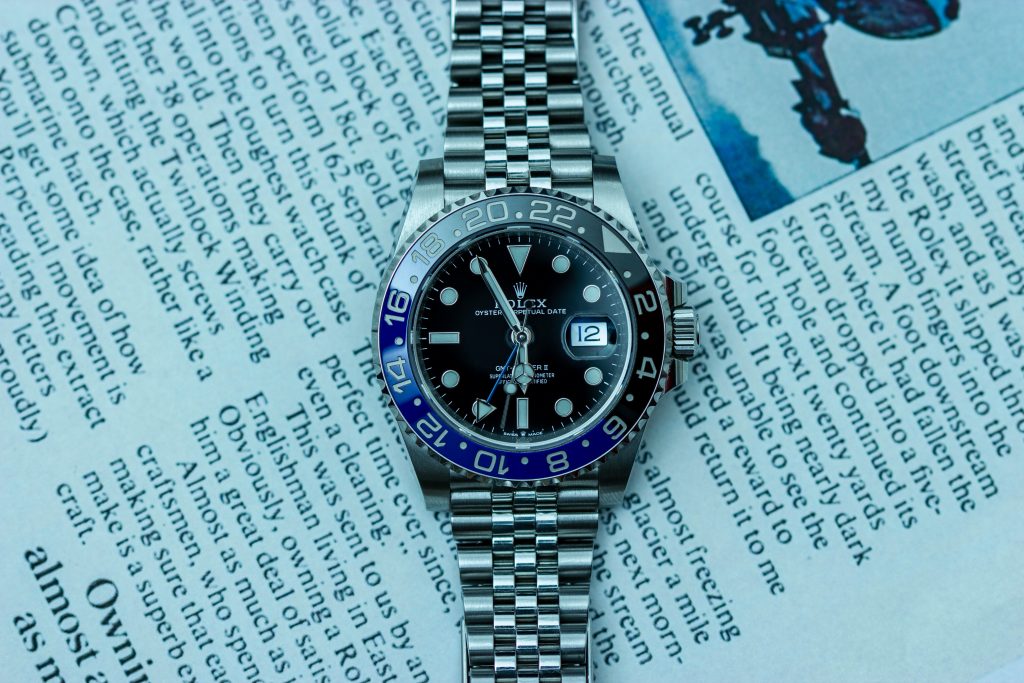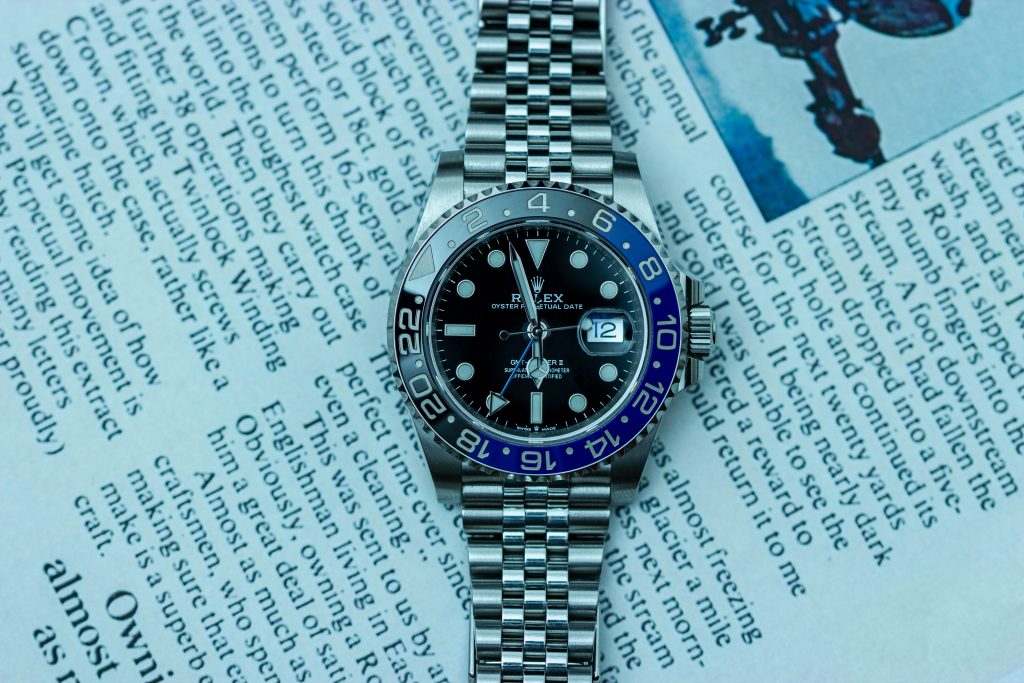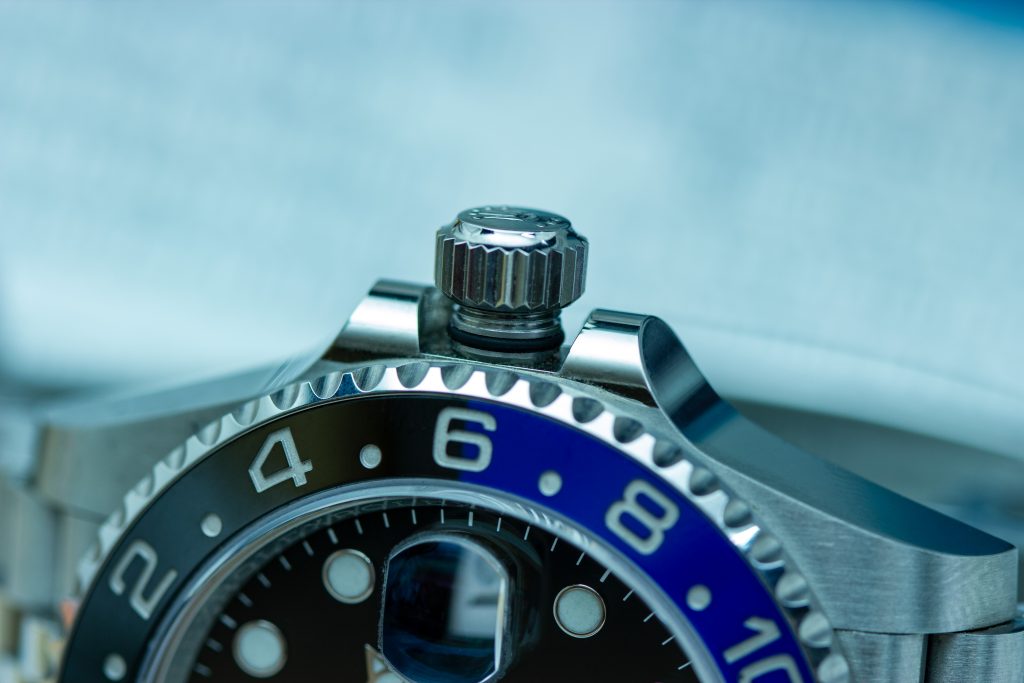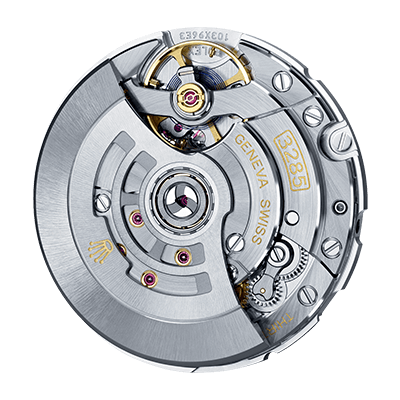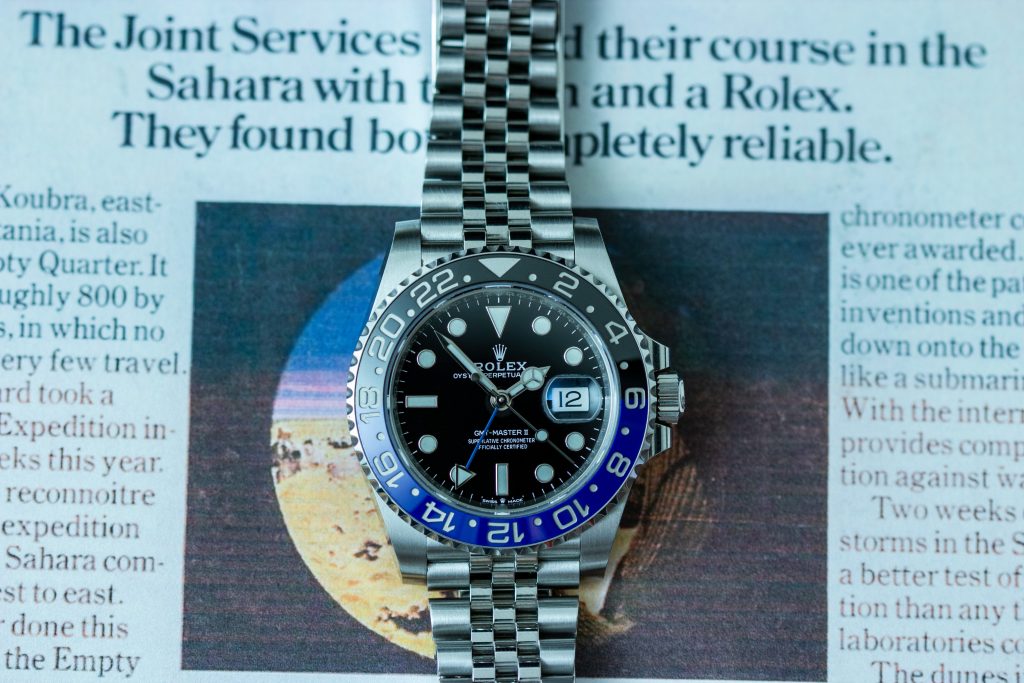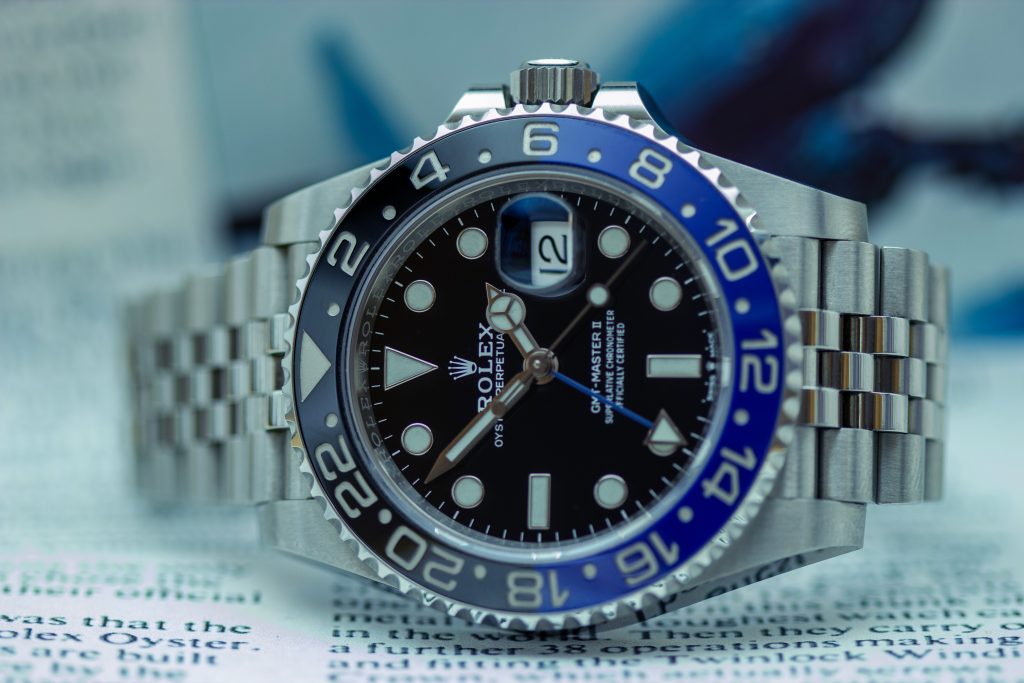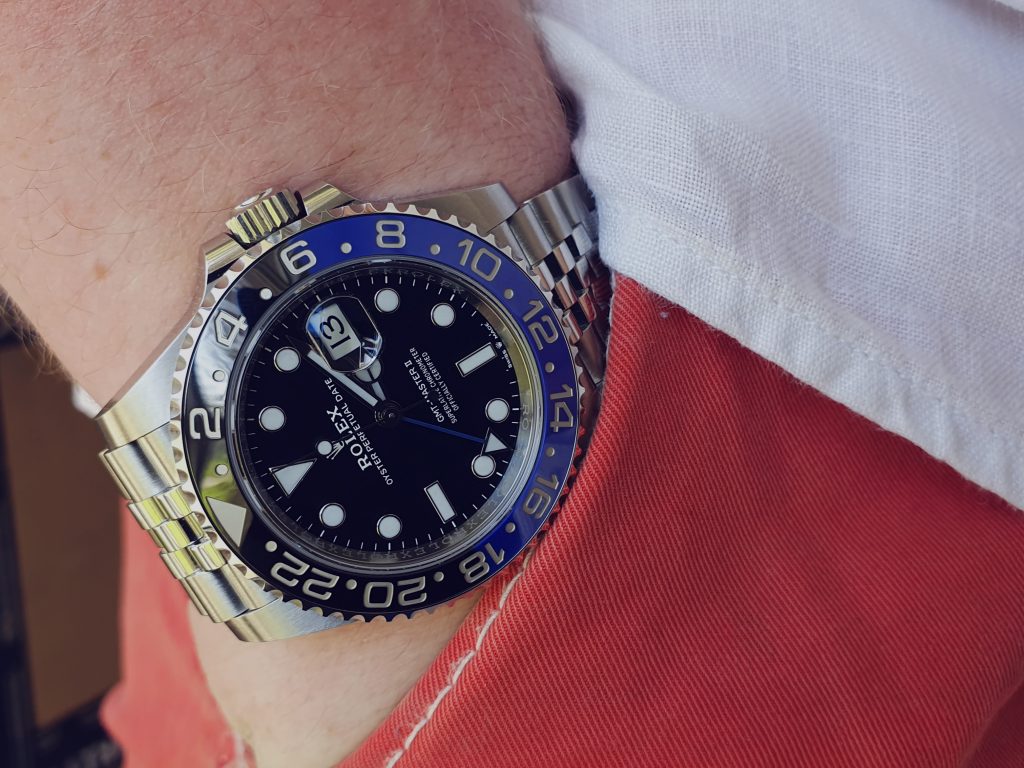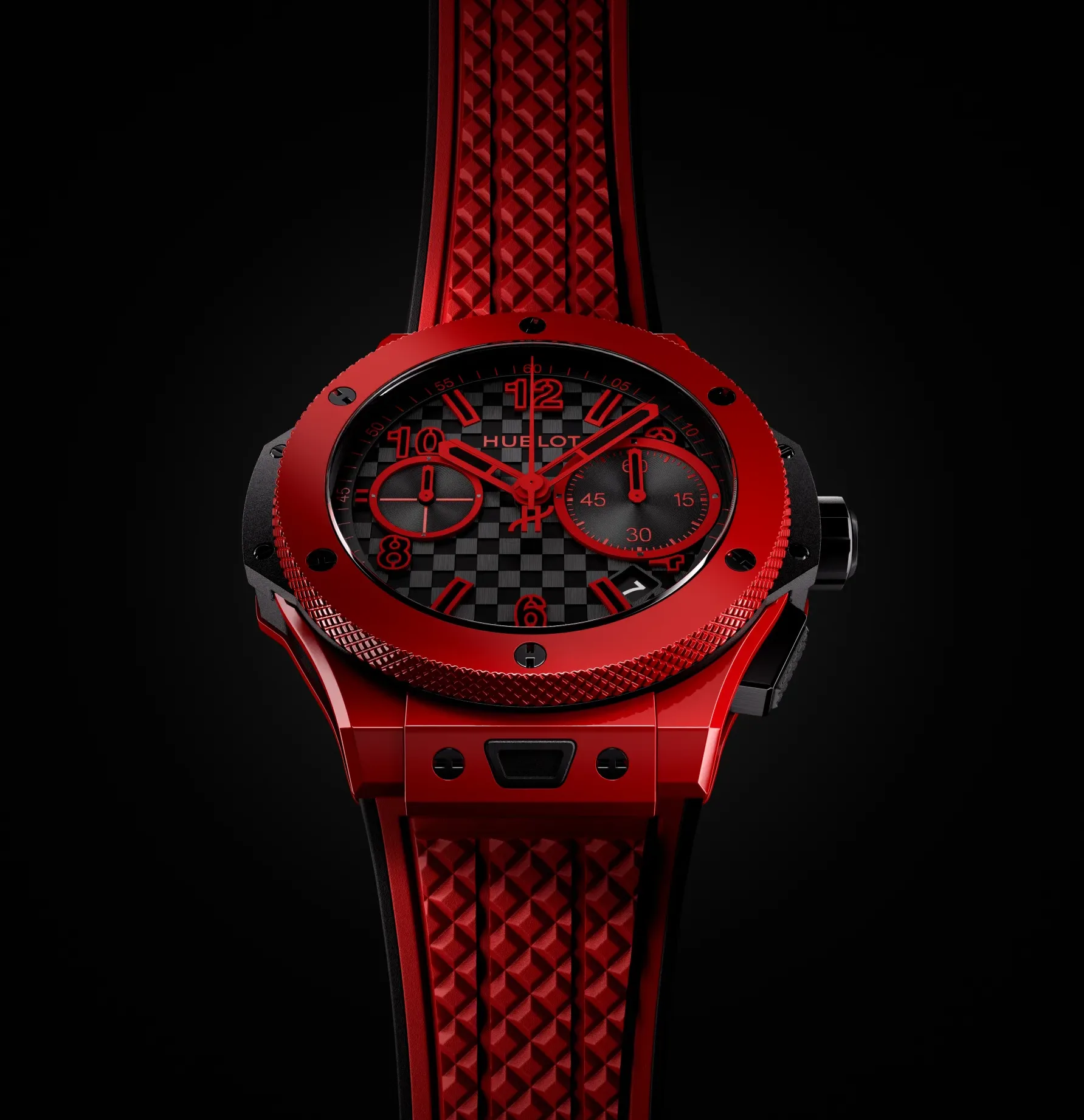Some think of Rolex as the ‘demon’ to be vanquished, that their conquest of the horology world is like a fog that clouds our vision from our true potential. As if getting rid of Rolex would solve all of horology’s problems. I mean, they only do the same design every year, right? This particular view is one I have come across in discussion forums before and, to be honest, it’s quite depressing. People look at the coronet and think of it as nothing but a status symbol for folks who have no interest in “real horology”, that no true enthusiast would go near one of these things with a ten-foot barge pole. And yet, in a way, we always end up back at Rolex. Even the devout pro-any-other-brand-except-Rolex horology ‘geek’ will probably end up with one at some point, just to see what it’s like, and then end up loving it forever.
You see, Rolex watches have been almost explicitly designed for this purpose. They are designed to be aesthetically pleasing through proportional balance, and the brand maintains its aura of luxury, a luxury that is hard to come by. We’ve all made jokes at Rolex’ expense when it comes to their infamous waiting list, thinking about how much better we are for not sitting around waiting to get the chance to pay retail. Yet, this is precisely how classical luxury should work. If you want a Rolls Royce or a Bentley made to your specification you have to put your name on a list and eventually, someone at the factory will look at the order form with your name on it. It can take over a year for Rolls Royce to make a bespoke designed Phantom due to the complexity and the craftsmanship involved. This level of prestige, having to wait until the product is delivered to you, works for Rolex as well. Granted, it’s a different sort of wait. Rolex is probably not bespoke building a Submariner, but to the consumer, it’s the finished product that matters.
Interestingly, both Rolls Royce and Rolex occupy their own individual positions in their respective markets, that’s down to how they’re marketed. Despite being owned by BMW and sharing parts with them, a Rolls Royce is still something extra-special and is advertised as such. It may not be as futuristic or wholesome as a Mercedes Maybach, for example, but there’s nothing else quite like a Rolls Royce, despite the few pitfalls it may have, the brand is at the point where its name and logo market themselves. It’s also become a term of endearment, a product that is the absolute zenith of design and fabrication is usually deemed the ‘Rolls Royce’ even by folks who have never sat in a Rolls Royce.
Despite Rolex having the highest production figures of the Swiss watch industry, it still has a level of class that’s hard to beat, and that’s down to the way the brand presents itself. Everybody knows what a Rolex is, no matter where you are in the world. Because everybody knows what it is, everybody knows it’s something special, made of high-quality materials and designed to last indefinitely. As with Rolls Royce, people know what a Rolex stands for immediately, even if they’ve never tried one for themselves. Believe it or not, that’s an incredibly hard thing to do and maintain, Rolex has been doing it practically since the Rolex name was conceived in 1908. That’s a long time to build up a brand reputation, and it’s undoubtedly paid off.
Earlier this year, Rolex unveiled the successor to it’s massively popular GMT-Master 2 reference 116710BLNR. That watch had been rumoured to be departing the Rolex lineup for at least two years, but during Baselworld 2019 it became real as its replacement was unveiled. The 126710BLNR, as you see here, built on the groundwork done by 2018’s 126710BLRO, nicknamed the ‘Pepsi’. It shares the same movement as the BLRO, the calibre 3285, and it shares the Jubilee bracelet as well. So, is the new ‘Batman’ worth the hype and the wait? I’ve had one on my wrist for a long-term review since May to find out.
The watch measures in at 40mm across but it wears like a 42mm or 43mm watch. The reason for this is down to the way the watch is designed. The markers and hands are large on the dial, and the ceramic bezel is wide, creating the illusion that the watch is larger than it really is. This means that if like me, you have large wrists that comfortably handle 45mm+ diameter watches, you won’t be disappointed by the Rolex. That said, if you have smaller wrists, you’ll find it accommodates them with just as much ease. The combination of brushing and polishing, along with the colour injected around the dial, makes the watch very attractive indeed from every angle. When I took the photos of the watch I noticed just how photogenic it is; there’s no wrong angle to take a picture from, which is uncommon.
Despite what people might imagine from the new BLNR, it’s mass is within a couple of grams of the old one. It measured in on our VSS (Very Scientific (Kitchen) Scales) at 143 grams. Even with the 116710BLNR’s chunky Oyster bracelet, the Jubilee still holds enough weight to be substantial without being overbearing. You can feel the quality of the work that’s gone into it. There are no sharp edges or corners on the Jubilee bracelet. The sleek taper of the bracelet, narrowing towards the clasp, and the combination of brushed and polished links makes it seem all the more luxurious. The way it shimmers and sparkles under light is something to behold as well. In a way, the Jubilee bracelet accentuates the watch even more so than the Oyster bracelet did. If you are concerned that the Jubilee is not as good as the Oyster, then you have nothing to fear.
Are those scratches?!
The folding clasp features a security lock with the Rolex coronet on it, as well as brushed outers and a polished centre. If you remember old Rolex bracelets and clasps, specifically from the early noughties era, then you can probably remember how hollow and mediocre the stamped bracelets and clasps felt. This is nothing like that. The clasp is just as high-quality as the rest of the watch with solid milled components and a high polish inside. There’s also a small folding extension which provides the owner with an extra link. Rolex recommends the Jubilee bracelet should be worn flush to the wrist to prevent stretching over time, but if it gets warm and your wrist expands, then the extra link provides comfort.
From my experience, due to its daily use, the clasp area will probably receive the most scratches. As you can see in my photos, the polished centre on the clasp has attracted a few battle scars from a dip in a swimming pool back in summer. Some folks recommend a piece of clear sticky tape to protect it. I think it’s a little late now anyway. Also, on the inner arms of the folding clasp and around the areas where they make contact, you will naturally find scratches over time. There isn’t really a way to avoid this, except for not wearing it at all which defeats the purpose of it entirely in my opinion.
The dial of the watch is exceptionally legible, as it needs to be. Remember, this is still designed to be used by pilots today (it’s in the part of the catalogue that Rolex calls ‘Professional Watches’), just as it was in the 50s when the first GMT-Master was released. That means you have nice, big and clear hands and markers constructed of white gold and filled with Chromalight, Rolex’ proprietary luminescence. You can tell it’s Chromalight because Rolex watches using SuperLumiNova glow green whereas this one gives off a blue hue.
To aid in readibility of the GMT function, the GMT hand on the BLNR is painted blue and given a large arrow tip. Working in conjunction with the bi-directional bezel, you can use this GMT hand to calculate the time in up to three different time zones. Here’s how to do it:
The watch is currently showing home time as 13:53.
Pictured above is the watch in its standard mode. It’s currently displaying one time zone (Greenwich Mean Time) in two different ways: 12 hour, as shown by the hours and minutes hands, and 24 hour, displayed by the blue arrow-tipped GMT hand. The time in the photo is 1:53 PM, or 13:53. Remember, the GMT hand performs one rotation in 24 hours and is aligned with the bezel, in its current position, it’s pointing to 1300 hours on the bezel (each round dot on the bezel represents the odd hour, as there isn’t space for numerals).
The watch has now been set backwards to L.A time (GMT -8hrs)
To set the GMT function, unscrew the crown and pull it out to position 2. This allows you to set the hour hand independently of the minutes and the GMT hand, note that the watch is still running to maintain accuracy. In the photo above, the hours have been set to the time in Los Angeles, USA, which is 8 hours behind GMT. Using the ‘Mercedes’ style hour hand, we can now see that the local time in L.A is 5:54 AM. But, if we use the 24-hour GMT hand, we can see that it’s 13:54 at home. So, as long as you know how many hours ahead or behind your second timezone is, you can always see the time in two timezones. Remember, the GMT hand is only replacing the hour hand, the minutes and seconds are still accurate unless you are in a timezone which is out by 30 minutes (such as New Delhi, India).
The watch is still set to L.A time, and the bezel has now been set to GMT -3hrs.
Sadly, your trip to sunny California has been disturbed by a call from the office back in Blighty. They’ve asked you to give a call to the office in Santiago, Chile, but you’re not sure if they’ll be open yet. You know that Santiago is 3 hours behind GMT, but you don’t want to go through the faff of unwinding the crown and resetting the hands. Luckily, you don’t have to, as this is where the bi-directional rotating bezel comes into play.
To check the time in Santiago, turn the bezel three clicks in a clockwise direction, as we have done in the photo. Now, we use the GMT, which has not moved, once again. Using the position of the GMT hand and the bezel, we can determine that the time in Santiago is 09:55, so the office will be open. As long as you can remember the home time while doing this, you can know three timezones simultaneously using the GMT-Master 2.
The watch is still set to L.A time, and the bezel has now been set to GMT +4hrs.
This time-zone hopping example hasn’t quite finished yet. The office in Santiago has said that it’s waiting for a confirmation letter to come from the Dubai branch, but they’re having trouble getting through to check and have asked you to make a call. You know that Dubai is 4 hours ahead of GMT. Once again, we’ll use the bi-directional 24-hour bezel on the GMT-Master 2 to check the time in Dubai.
To check the time in a time-zone that’s ahead of the home time, turn the bezel anticlockwise. As Dubai is 4 hours ahead, the bezel needs to be turned anticlockwise by 4 clicks. Using the position of the 24-hour hand relative to the bezel, we can see the time in Dubai 17:57, and the Dubai branch has likely shut. When you’re finished checking the time in Dubai, you can return the bezel to the standard position to display both home and local time simultaneously.
In all honesty, you’ll probably need to use the world clock app on your phone to check how many hours out the other timezones are, but I’d still use the GMT-Master 2’s party piece just for the sake of it. It might well be the most intelligently designed function ever fitted to a watch, and you can see why it would be particularly handy to Pan-Am staff, or any crew on board a plane.
Despite being type rated for the skies, the GMT-Master 2 is still water-resistant to 100m and features the Triplock crown, denoted by the three dots under the coronet on the crown. So, you can even go for a swim with the GMT-Master 2, making it not only the ultimate travelling companion but also the ultimate holiday companion too.
Inside the watch is the calibre 3285, Rolex’ latest generation of the GMT movement. Previous watches, including the 116710BLNR, used the 3186 calibre which had a blue Parachrom hairspring from the mid-noughties onwards. Rolex says the Parachrom hairspring is more resistant to temperature changes and shocks than normal hairsprings and is antimagnetic as well.
The new 3285 calibre also has the blue Parachrom hairspring inside it. But, it also has a few new specs to add to its list. For starters, the power reserve is 70 hours on the new BLNR, where it was 48 hours on the old one. The new 3285 powered BLNR also uses Rolex’ new Chronergy escapement which has a double escape wheel and is used to provide better power efficiency than a standard Swiss lever escapement like in the old 3186 powered BLNR. This partly helps the watch achieve the Rolex target for precision of +/-2 seconds per day. There are also new shock absorbers as well in the new 3285 calibre, nicknamed Paraflex.
“But, how much of this am I likely to see as an owner of this watch?” Apart from the power reserve, you are unlikely to notice the difference between the two. Therein lies perhaps the only chink in the GMT-Master 2 126710BLNR’s armour, it was released at the same time that the old one was discontinued. So, if you got the old one in the run-up to Baselworld, you may feel like you’ve missed out a little, but that feeling probably won’t last long as you enjoy the 116710BLNR. If you have one of those and you don’t have an enormous cash reserve to spend, then there isn’t much reason to go for the new 126710BLNR. To pay a fair price for it, you’d need to go onto another waiting list. Given that it currently sits somewhere between 12 and 18 months, Rolex may introduce something you like even more between now and then.
That said, if you don’t have the old 116710BLNR and you’re interested in picking up the new one, I can guarantee you that you won’t be disappointed. When I said this watch is photogenic, I meant it, and you don’t need lots of professional gear and lots of knowledge to make it looks outstanding in photographs. The wrist shots that you have seen in this article were taken on a Samsung Galaxy S10+ while the rest on my standard Canon DSLR.
The retail price of one of these is £7150 with an expected waiting time of 12 to 18 months for delivery. The grey market price for the Rolex GMT-Master 2 ref 126710BLNR can be anywhere from double the price and upwards, even with a supposed bubble burst (it’s more of a market decline than a bubble). That makes the choice clear, at least in my mind. Put yourself on the waiting list for one of these and forget about it for a while, that makes the journey towards the end goal that much better. Sure, you can have a BLNR tomorrow and nobody’s stopping you, plenty of people do it that way, but you need to weigh the options and decide whether that really is the route you want to go down. You’ll cherish the watch that you waited for more than if you bought it immediately, and you’ll also be thankful you didn’t shell out nearly double retail for it too.
Author’s note: In 2020, Rolex increased the retail price of the BLNR to £7750
Visit Rolex here.

